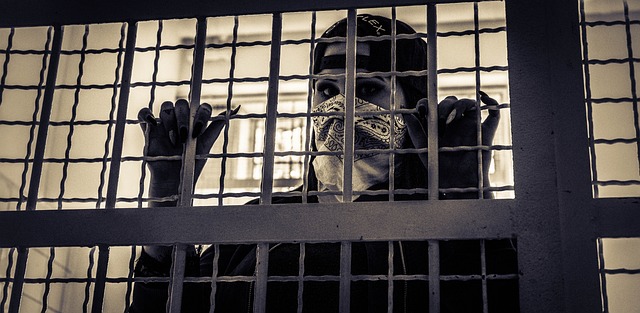Creating safe streets for pedestrians requires a multi-faceted approach, combining infrastructure improvements like crosswalks and reduced speeds with emerging technologies in DUI law. Smart city initiatives leverage data analytics and AI surveillance to optimize traffic flow, detect hazards, and prevent pedestrian-vehicle conflicts. Advanced driver assistance systems (ADAS) and innovative DUI devices enhance safety further. While these technologies offer promise, ethical challenges such as privacy concerns, algorithm bias, and digital divides must be addressed to ensure equitable and accessible street environments. Integrating AI-driven traffic management and autonomous vehicles holds the key to predicting and managing pedestrian flows, enhancing safe crossings, and ultimately revolutionizing urban mobility.
In today’s urban landscape, ensuring safe streets for pedestrians is paramount. This article explores the intricate balance between protecting pedestrians’ rights and enhancing street safety. We delve into the foundational knowledge of pedestrians’ rights, examining how this understanding fosters safer environments. Emerging technologies play a pivotal role in strengthening DUI laws, while smart city solutions leverage innovation to improve pedestrian safety. Additionally, we navigate challenges and ethical considerations surrounding new technologies and predict future trends that will shape pedestrians’ rights and street safety.
- Understanding Pedestrians' Rights: A Foundation for Safe Streets
- The Role of Emerging Technologies in Enhancing DUI Laws
- Smart City Solutions: Using Technology to Improve Pedestrian Safety
- Challenges and Ethical Considerations in Implementing New Technologies
- Future Trends: Predicting the Impact on Pedestrians' Rights and Street Safety
Understanding Pedestrians' Rights: A Foundation for Safe Streets

Understanding Pedestrians’ Rights is a fundamental step in creating safe streets for all. In many cities, pedestrians are often overlooked in transportation planning, leading to hazardous walking conditions. By recognizing and enforcing pedestrian rights, communities can significantly improve street safety. This includes ensuring clear crosswalks, consistent traffic signals, and reduced vehicle speeds near schools, parks, and residential areas where foot traffic is high.
Emerging technologies play a crucial role in this context. For instance, smart city initiatives utilizing data analytics and sensor technology can detect pedestrian activity, helping to optimize traffic flow and reduce conflicts at intersections. Additionally, advanced driver-assistance systems (ADAS) like automatic emergency braking and lane departure warnings can mitigate accidents involving pedestrians. Understanding and protecting pedestrians’ rights is not just about physical infrastructure; it’s also about embracing innovative solutions in DUI law and technology to create a more inclusive and secure environment for those who choose to move on foot.
The Role of Emerging Technologies in Enhancing DUI Laws

In recent years, emerging technologies have played a pivotal role in enhancing DUI (Driving Under the Influence) laws and ensuring safer streets for pedestrians. Advanced data analytics and AI-powered surveillance systems are now being utilized to monitor traffic patterns, identify high-risk areas, and predict potential drunk driving incidents. These technologies enable law enforcement agencies to strategically deploy resources, conduct targeted patrols, and proactively intervene in at-risk zones, thereby reducing the likelihood of DUI-related accidents involving pedestrians.
Furthermore, innovative devices such as wearable sensors and smart road signs are being integrated into urban infrastructure. Wearable technology can detect alcohol consumption levels through biometric feedback, alerting authorities or designated drivers when a person may be impaired. Smart road signs, equipped with real-time data connectivity, can communicate changing conditions to drivers, encouraging responsible behavior and reducing the risk of DUI incidents that endanger pedestrians.
Smart City Solutions: Using Technology to Improve Pedestrian Safety

In today’s digital era, smart city solutions are leveraging emerging technologies in DUI law to significantly enhance pedestrian safety. Advanced surveillance systems equipped with AI can detect and monitor traffic flow, identifying potential hazards before they occur. These systems not only track vehicle speeds and patterns but also alert authorities about reckless driving behavior, enabling prompt interventions.
Furthermore, integrated mobility platforms that utilize real-time data from various sensors and cameras help in creating dynamic, safe streets for pedestrians. By analyzing foot traffic and pedestrian movements, these platforms can optimize signal timings at intersections, reducing congestion and ensuring smoother, safer walks across busy areas. This technological integration ensures that cities become more responsive to the needs of their residents and visitors alike, fostering a culture of responsible driving and enhanced pedestrian rights.
Challenges and Ethical Considerations in Implementing New Technologies

The implementation of new technologies, such as smart traffic signals and AI-driven surveillance systems, promises safer streets for pedestrians. However, it also raises numerous challenges and ethical considerations. One primary concern is privacy. With advanced surveillance systems collecting vast amounts of data, ensuring pedestrian privacy becomes a complex issue. This data can potentially be misused or fall into the wrong hands, leading to significant breaches of individual freedom. Additionally, bias in algorithms used by these technologies could result in unfair targeting or profiling of specific communities, exacerbating existing social inequalities.
Another challenge lies in accessibility and digital divides. Emerging technologies must be designed with inclusivity in mind to ensure all pedestrians can benefit from them equally. The less tech-savvy members of society might struggle to navigate these systems, creating further disparities. Moreover, the cost of implementing and maintaining such technologies can be prohibitive for many municipalities, potentially leading to uneven access across different regions or socioeconomic groups. Balancing innovation with these challenges is crucial to create safe street environments that are just and accessible to all pedestrians.
Future Trends: Predicting the Impact on Pedestrians' Rights and Street Safety

The future of pedestrian rights and street safety is closely intertwined with technological advancements. As cities embrace smart city initiatives, emerging technologies like AI-powered traffic management systems have the potential to revolutionize how we navigate urban spaces. These systems can predict and manage pedestrian flows, reducing congestion and ensuring safer crossings. For instance, advanced sensors and cameras can detect pedestrian intentions, allowing for more responsive traffic signals that prioritize people over vehicles in busy intersections.
Additionally, the integration of autonomous vehicles into everyday life will significantly impact street safety. While self-driving cars aim to reduce accidents, their interactions with pedestrians must be carefully considered. Emerging technologies in DUI (Drunk Driving Under Influence) law, such as advanced sobriety tests and real-time blood alcohol level monitoring, could also play a role in keeping both drivers and pedestrians safe. As these innovations mature, we can expect more data-driven approaches to shaping streets that prioritize the well-being of all users, ultimately fostering inclusive and secure urban environments.
As we look towards the future, it’s clear that emerging technologies play a pivotal role in shaping both DUI laws and pedestrian safety. While innovations like smart city solutions promise enhanced security, navigating challenges and ethical considerations is crucial to ensure these advancements protect pedestrians’ rights without compromising privacy or human dignity. By staying informed about future trends, policymakers and technology developers can work collaboratively to create safe streets that prioritize the well-being of all users, fostering a more inclusive and secure urban environment.






